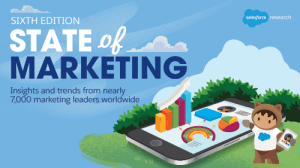Highlights Of The Latest Trends In Marketing



Canadian marketers were doing all the right things — adapting to digital channels, embracing data-driven thinking and reimagining customer experiences — and then the events of 2020 hit them. While the global pandemic brought many businesses to a temporary halt, the long-term effect has been to
Canadian marketers were doing all the right things — adapting to digital channels, embracing data-driven thinking and reimagining customer experiences — and then the events of 2020 hit them.
While the global pandemic brought many businesses to a temporary halt, the long-term effect has been to make the work of marketers more important than ever. Only by having a clear sense of a brand’s purpose, values and promise can consumers make smart choices about what and where they buy.
With more buying happening online than ever before, the work marketers did to shift their priorities will only continue as we edge towards 2021 and beyond. That said, marketers don’t want to feel as though they are operating in the dark, which is why it’s critical they have actionable intelligence about their role and the opportunity ahead of them.
Salesforce has answered this call with its sixth annual State of Marketing Report, which is based on a survey of more than 7,000 marketing leaders from around the globe. The data indicates many CMOs and their teams are facing the same challenges, and that they are largely aligned on the technologies to help overcome them.
Just look at how the vast majority (84%) of marketers around the world are now using artificial intelligence (AI) in some form, representing a huge leap from 29% last year. Marketers are likely turning to AI in part because of their expanded mandate. For example, 79% of marketers said they lead customer experience initiatives across their organizations. Marketers are also becoming more targeted. In segments like B2B, 92% now have an account-based marketing program.
While the full study is worth reading in its entirety, what follows is a look at the Canadian-specific trends based on responses from local marketers.
The No. 1 marketing priority in Canada is . . . complying with privacy regulations
It probably comes as no surprise that the proper handling of customer information is top of mind among Canadian marketing leaders.
With laws such as CASL, and the recent emergence of the EU’s GDPR, it has become increasingly complex to ensure brands are getting the necessary permission before they begin communicating to customers.
This isn’t necessarily a bad thing, however, when you consider Canadian marketers’ other top priorities, which include innovation and unifying customer data sources.
If brands are confident they are compliant with Canadian privacy laws, it will accelerate their ability to create innovative campaigns and experiences, both of which will require data that provides them a unified view of their customers.
The No. 1 marketing challenge in Canada is . . . insufficient organizational structure and processes
Marketers may be taking the lead on customer experience design in many Canadian firms, but they’re hardly the only ones who are deeply involved in developing and nurturing those relationships.
Successfully driving demand and maintaining loyalty among customers requires highly cohesive hand-offs between sales, customer service AND marketing, to name just a few. No wonder structure and processes is a challenge: marketers in Canada are much like their peers in being in the early days of figuring all this out.
This also helps explain why the second-biggest challenge is the same as the biggest priority. Innovation is really important, but it’s also really hard, because you need to know what customers want and have the team in place to deliver on their expectations. As a result, the third biggest challenge was a tie between “creating cohesive journeys across channels” and “insufficient human resources.”
The No. 1 use case for AI among marketers in Canada is . . . surfacing data insights
Marketers realize they can’t address their challenges by simply hiring more people or working their existing team harder. They see that AI’s biggest value comes from its ability to uncover customer journeys, to predict shifts in behaviour and to identify new ways to drive conversions that lead to sales.
It makes sense, then, that the second and third most popular AI use cases describe how those insights can be applied: personalizing individual customer experiences and personalizing the overall journey.
The use cases of AI may also relate to an interesting correlation across marketers in both B2B and B2C brands. While budget allocations can vary when you’re targeting other businesses versus consumers, both B2C and B2B brands are putting 18% of their budget towards technology (such as AI) and 13% towards research, where tools like AI may assist them.
The No. 1 marketing metric in Canada is . . . revenue
So much for “soft” ROI. In the past, marketers were sometimes accused of focusing too much on metrics such as “share of voice” or “reputation,” which weren’t always easy to quantify. That’s changed.
In fact, while “digital engagement rate” was the second-most popular metric — and a good one, given that many brands are still getting used to operating in digital channels —the third was “sales effectiveness.”
This bodes well for Canadian marketing departments, suggesting they are actively creating a better partnership with sales departments that will only be enhanced if they are using a platform that integrates tools such as a CRM with marketing automation.
In the meantime, marketers in Canada are continuing to look ahead. They see an expanding population, the rise of 5G networks and (of course) new regulations all becoming more important over the next decade. This research suggests they have the digital, customer and sales-focused attitude that will help them win, whatever comes their way.
For a lot more data on marketers in Canada and around the world, download the complete Salesforce State of Marketing Report.






















